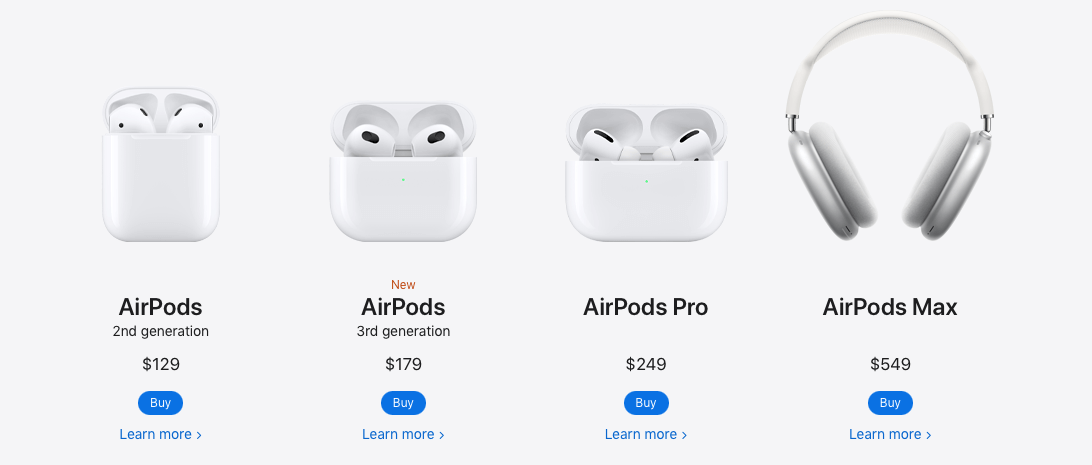Trying to figure out a price for your product can be tricky. There are so many variables that you need to consider. For example, target demographics (age, job… essentially how much they can afford), production costs, and profit goals.
It’s important to ensure that you’re striking the right balance between these variables. If you put the price too high, your customers may churn and turn to cheaper competing products. If you price your product too low, you may lose out on the profits you were aiming for, and the value of your product may decrease.
However, there are ways you can strategically increase the price of your product to highlight its value and quality, increase product sales, and widen brand awareness.
In this article, we’ll cover important topics to grasp a better understanding of the prestige pricing strategy, including:
- What is prestige product pricing?
- Why is it important for product marketing?
- A real-life example of prestige pricing.
- How to successfully use prestige pricing.
- Challenges with prestige pricing.
What is prestige product pricing?
Prestige product pricing - or premium pricing - is a pricing strategy used by product marketers where they maintain an increased price of a product to show its high value. Whilst lower prices can often be interpreted as low quality, prestige pricing takes advantage of the consumer’s assumption that the higher cost means better quality and higher-end products.
Why is prestige pricing important for product marketing?
Sometimes, lower pricing can end up negatively impacting your product sales. There are many reasons why premium pricing helps you market your product.
Increased product value
We don’t know about you, but if we're browsing products, we typically assume one is better if it costs more. It’s a natural assumption to make, right? So… it's clear that this strategy works.
Premium pricing allows you to influence how people perceive your product’s value and how they feel about your brand. If they consider your product to be desirable, they’ll buy it.
Increased sales because of this will only feedback into its perceived value. If all their peers are buying it, they’ll want to, too.
Increased brand awareness and popularity
This goes hand in hand with the previous point:
Increased value = Increased sales = Increased brand awareness
Simple.
Higher profit margins
If you’re increasing the price of your product compared to the production cost, of course, your profit margins are going to be a lot higher.
A real-life example of prestige pricing
Prestige pricing is all about exclusivity and image. Consumers will be more likely to buy an expensive product if the brand is well known and well-liked, even if the product isn’t dissimilar to competing products.
Apple vs Android
We love both systems, of course, but there’s absolutely no hiding from the infamous debate on whether Apple or Android products are better.
A lot of people would rather turn to Apple products because they’re easier to use and are aesthetically pleasing, even if they aren’t technologically superior. And yet, Apple is typically more expensive than Android. The trick here is that people are willing to pay more for Apple products because of their popularity and branding, which is associated with luxury and modernity.
Apple’s internal premium pricing strategy
Apple continues to come out with attractive products with easy-to-use features which aren’t particularly different from other products they’ve launched. And yet, the prices continue to rise. Take AirPods as an example. This is how they’re marketed on their website:

As you can see, the jump from AirPods (third generation) to AirPods Pro is nearly $100. Naturally, here you’d say there has to be a significant difference between them to warrant the price increase, right? Let’s see...
The answer is actually… no. AirPod Pros have an added feature of noise cancellation and transparency. But, their listening time is significantly reduced. In all honesty, the cheaper option of AirPods (third-gen) is likely the better choice. And yet, people continue to pay for the more expensive ones due to the need to continually “level up” with their Apple products, and because the price automatically makes them feel that they’re better. Clever, right?
Challenges with prestige pricing
And, of course, with every strategy comes hurdles you potentially need to overcome. Here are a few for you to think about:
Need an already established brand
The issue with prestige pricing is that your brand needs to already be fairly established for it to be successful. It wouldn’t work for an unknown brand because a lot of a product’s value comes from its popularity. A lot of the time, people know when brands are overcharging but will buy it anyway for the status of the product.
It uses a large amount of budget and resources
Also, for this strategy to work, the product needs to be high quality or at least perceived as such. If customers see your product as low quality, then this strategy will fail. This means spending a lot of your marketing and advertising budget and resources on ensuring that your product is seen as premium, exclusive, and essential to have - regardless of the price.
Limits your ability to sell to a mass-market
As we said before, this strategy is all about establishing your product as exclusive. So, this does limit who you can sell your product to. Of course, the way to overcome this is by ensuring that you have done your market research properly and establishing a plan of action that’ll ensure this doesn’t heed sales.
Leaves you vulnerable to cheaper competing products
With this strategy, there’s always the risk of target customers churning, or immediately turning to competing products. This is why you must ensure that you establish a solid, loyal customer base who would rather buy your more expensive product than a competitor’s. Or, persuade them why your product is worth it.
How to successfully use prestige pricing
As you can see from the challenges, you must be careful with implementing this strategy. Doing it incorrectly can easily negatively impact your product sales and brand perception.
So, we have put together a simple framework that’ll help you to identify if this strategy is right for your product, and how to carry it out properly.
Establish your brand image
As we said before, the prestige pricing strategy won’t work unless you have a well-established, fairly popular brand. But this won’t happen overnight. It can take years for your brand to be a staple within your market. Here are some things to consider when setting up your brand:
Research the competition: Get to know who you’ll be competing with on the market. Discover what they’re doing right, what they’re doing wrong, and how you can implement your strategies to set yourself apart from the crowd.

Establish your brand personality: Personalization within your brand identity is critical because it helps to develop a relationship with your audience, and automatically sets you apart from your competition.
Choose the right business name: Your name is so important because it’s the first impression your customers will get from your business and your products.
Craft a catchy slogan: It’s the perfect way to introduce your business, and keep it in the mind of your customers. When I tell you “Just do it”, you automatically think of a certain brand, right?
Design a professional logo: A strong design makes a significant impact on your audience. It’s the first thing they see and it needs to be memorable.
Define a visual language: Maintaining consistency with your designs is a good way of establishing your brand. Similar to a logo, a strong overarching design or visual language will be more effective and easier to attach to your brand. Your business will then automatically become more memorable as a result.
Build a brand voice: Bring personality to your brand in line with your target demographic. Make it fun and exciting for your audience. Find ways in which you can communicate with them that aren't boring. Catch their attention and keep it by ensuring you have a strong brand voice.

Apply your branding consistently: Overall, consistency is key. It’s more aesthetically pleasing, which will benefit your brand, but will also ensure that your company isn’t forgotten within the market.
Discover how much you’ll price it for
It’s easy to say that you’re going to use the strategy, but the next step is deciding how you’re going to price your product. This is going to be the defining aspect, and what will make or break your sales process.
First, you should identify the production cost and profit margins you want to gain with your product, and then calculate the price accordingly. Compare this with competing products to see if you’ve chosen the appropriate price.
Craft the right narrative
Next is marketing the benefits of your product, and establishing why the price is right.
- Explain how your product is different from competitors.
- Show your customers how they’ll benefit from your product.
- Be transparent and talk about why your product is so special and worth the price.
- Fit your messaging to your medium, but remain consistent in your points for wherever they’re seeing your marketing.


Want to learn more about pricing your products?
If you want to learn more about all the different ways in which you can price your product, pre-order our Pricing Certified: Masters course. Tamara Grominsky, Chief Strategy Officer at Unbounce, will be leading the certification and sharing her expansive expertise on the topic.
By the end of this course, you'll be able to confidently:
💰 Understand pricing strategies
💰 Be able to change your pricing confidently
💰 Understand how to conduct a pricing analysis
💰 Identify how pricing strategies vary, depending on industry
💰 Know how to segment your pricing
💰 Understand how discounting works
Pre-order and bag $100 off with the coupon: PRICING-PREORDER


















 Follow us on LinkedIn
Follow us on LinkedIn





.svg)
Start the conversation
Become a member of Product Marketing Alliance to start commenting.
Sign up now